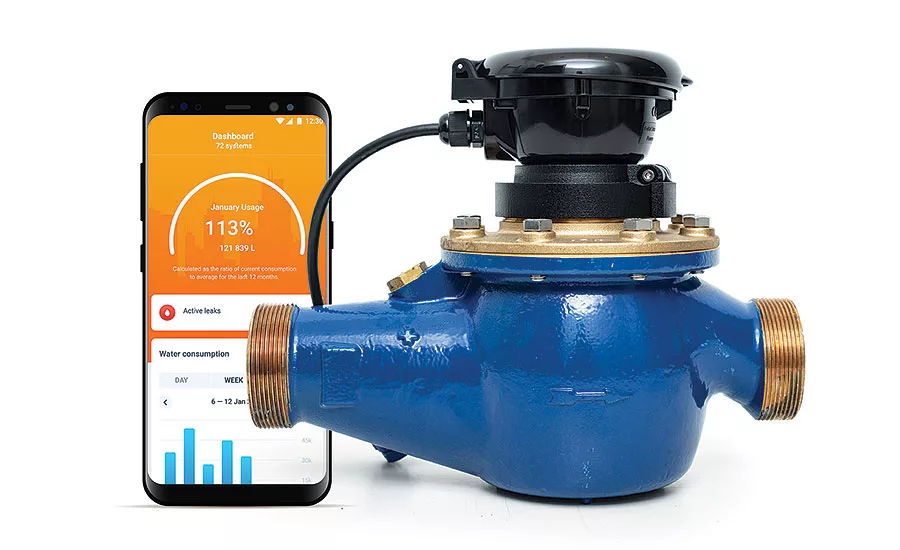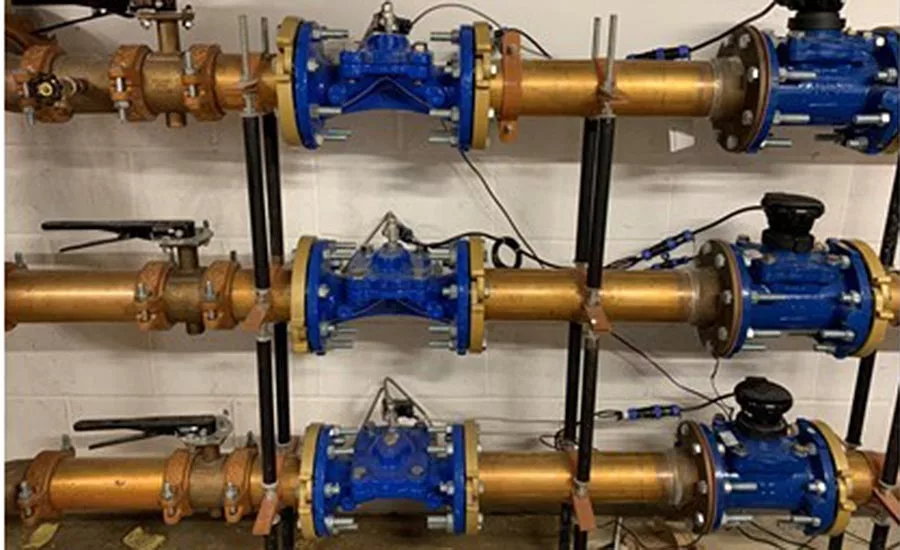PM Profile: WINT’s Yaron Dycian
Water intelligence company provides end users with a more efficient use of water.

Yaron Dycian - Chief Product & Strategy Officer


WINT devices alert maintenance staff and can automatically shut off water when needed. When WINT detects a leak, it applies AI to make suggestions that identify the source of leaks so staff can quickly fix issues.
Water is a precious and increasingly scarce resource. One company is aiming to help businesses conserve water and expenses. Started in Israel — with offices now in New York, Boston and the United Kingdom — WINT uses a comprehensive system of smart valves, AI, machine learning and communication systems to prevent, protect and preserve water usage.
PM Chief Editor Nicole Krawcke had a chance to chat with Yaron Dycian, chief product and strategy officer at WINT, about the company and its technology.
PM: Tell me a little about WINT? How did the company get started?
YD: WINT is passionate about helping the world conserve one of its most precious resources and is dedicated to helping businesses prevent the hazards, costs and waste associated with water leaks.
It started from the personal experiences of our founder, who had just finished building a new home and left for vacation. While he was gone, disaster struck. A really bad water leak, unobserved and unattended, caused massive damage to the new home, costing him a fortune to repair and delaying completion for a year.
So, he looked for water management solutions to prevent such a catastrophe from happening in the future, but couldn’t find anything. He decided to take matters into his own hands and founded the company.
PM: What is WINT and how does it work?
YD: WINT’s Water Intelligence solution was created to help organizations achieve two primary goals: Prevent damage from water leaks and improve sustainability by significantly reducing ongoing water consumption.
WINT uses advanced AI to perform real-time water flow analysis and identify anomalies, waste and leaks at their source. It sends instant alerts and can automatically shut water off to prevent damage. The WINT solution also delivers detailed analytics, reports and deep insights, enabling sustainability and facility management teams to reduce consumption and prevent damage. The units utilize the power of artificial intelligence, the convenience of high-speed cellular data connections and smart shut-off valves.
PM: What exactly is water intelligence?
YD: Our machine learning technology continuously adapts to local water usage patterns, providing valuable visual feedback and instant alerts to facility managers, who can in turn use the information to easily discern between a malfunctioning device or a pipe break, for example. Our clients consistently report 25% lower consumption while using WINT, and we look forward to helping businesses throughout the United States avoid crippling water damage and become more sustainable enterprises.
PM: The smart home concept has been around for decades, but it seems that smart plumbing products have only started to emerge the last few years. Why do you think that is and how is it changing?
YD: Water leaks in homes, office buildings and other facilities have been an issue for many years. Water waste and sustainability are a relatively new topic whose importance has been growing recently with the increased public awareness for environmental issues.
Historically, leak alerting solutions were based on simple floor-based leak detection devices. These devices are based on a pair of open wire-ends. When water reaches the device it short-circuits these wires — and water is “sensed.” This somewhat old technology provides a rudimentary solution to leak detection and does not help detect waste.
Recent technological advances — mainly in the areas of big data and advanced analytics — are enabling a new generation of solutions. These intelligent devices analyze water flow, detect anomalies and can associate them with damaging or wasteful consumption. The devices alert and shut off water supplies when needed and can direct users to potential sources of waste.
The combination of powerful new technologies with the growing concern for the environment have led to the emergence of water intelligence devices. We believe that in a few years, the vast majority of offices and homes will be equipped with these new products.
PM: What type of applications can WINT be used in?
YD: WINT technology has applications in enterprises, facility management, cooling towers, hospitality and construction sites. Some of our success stories include:
- In order to eliminate risks, save time and money, and eliminate water damage at construction sites, Tidhar Construction, a multibillion construction and real-estate developer, deploys WINT devices at its sites from day one. Systems are initially installed on the water mains, and devices are added to newly constructed areas and additional floors as the project advances. WINT is mandated by Tidhar’s CEO at all sites, and the company has not submitted a single water leak insurance claim in more than three years of using WINT at more than 40 projects.
- Some of the world’s largest technology companies who make software, printers and microchips use WINT as part of their sustainability agenda. As expected from these high-tech leaders, they closely monitor their water consumption and have managed to cut a whopping 24% of their consumption with WINT.
- One large insurance company suffered a chilled water pipe leak during a long holiday weekend. The leak flooded 18 floors, resulting in $3 million in damages. Following the incident, this insurance carrier installed WINT devices on its chilled water and domestic water supplies, leading to an instant reduction of water consumption and prevention of a few potentially damaging leaks.
PM: What type of data and analytics are available and how do they help facility managers and building owners?
YD: WINT’s real-time analytics identify anomalies when they occur. This results in automated alerts sent to the facility management team, identifying the source of the leak and the action taken. This lets facility managers resolve these issues quickly and efficiently. For leaks that could result in water damage, this means a prevention of losses that can easily reach millions of dollars, let alone the lost productivity and reputational damage. In other cases, the system detects sources of water waste. This allows our customers to quickly resolve the problem. This typically leads to savings of approximately 25% of water consumption.
In addition to the real time analytics, our systems deliver offline reports. These deliver various KPIs giving executives the tools to track long term performance. Facility executives use our tools to track improvements in their team responsiveness and ensure issues are resolved effectively. Sustainability executives use our tools to verify that their facilities are on an improvement path to reduce their environmental footprint. For example, you can see that a specific site or building has reduced its level of wasted water from 25% to 12% over the past couple of months, or that a specific building’s waste has actually increased over the past month. These are very effective tools to track performance and drive ongoing improvement.
PM: Why should MEP contractors and engineers embrace products like WINT?
YD: Office buildings or residential and commercial complexes can be particularly vulnerable to plumbing mishaps. They include multiple types of water system such as domestic water, hot water circuits, chilled water and other systems. Any of these can leak and cause significant damage.
In high-rise buildings, architecture can turn a simple leak into an expensive affair. The location of the toilets is often the same from floor to floor. That stacking design means any problem on the top floor can have repercussions in the floors below, allowing water to easily find its way down and impact lower floors. A mid-size leak may require a full shut-down of the building for repairs.
Water management systems should be part of the risk management toolkit for any commercial facility. The systems can act as an additional insurance policy for commercial buildings, both during construction and then throughout the life of the facility.
Water is also a critical resource. Many parts of the world are turning into water stressed areas — from Texas to London to Australia. Water has therefore become an important social and sometimes political issue. Customers care and will not endorse organizations who negatively impact the environment. Organizations are now looking to reduce their water footprint, driven by environmentally aware consumers and increasing regulations by local, state and federal governments.
PM: What are some things we can expect to see from WINT in the near future, and what are your longer-term goals?
YD: WINT’s goal is to be the leader in providing the best solutions to manage water in buildings — residential, commercial, etc. We are on a path to continuously improve our algorithms, tools and technologies. Expect solutions that will continue to expand our footprint to all possible water systems in a building, and to provide ever improving management and analytics.
PM: Anything else you would like to add?
YD: Water management in buildings has traditionally been neglected. Outdated water-management tools weren’t up to the task to provide the real-time information and advanced analytics needed. There was also no economic pressure. In the past, water was cheap and the cost of waste negligible.
With a seemingly infinite supply of water available, sustainability was not a priority. Now, however, water scarcity and awareness are driving toward increased water conservation.
Awareness for the potential hazards and cost of water damage has also increased in recent years. And recent advances in data analytics and machine learning technologies provide innovative and powerful solutions that were not available a few years ago. The result — water management solutions are set to become a standard element in any building in the coming years.
PM: What is one thing about you that most people don’t know?
YD: I love spy thrillers. Whether movies or novels — whatever I can get my hands on — I can’t get enough. I’m still mourning the loss of Sean Connery, who was the best James Bond of all.
READ MORE PROFILES
www.pmmag.com/pm-profile
Looking for a reprint of this article?
From high-res PDFs to custom plaques, order your copy today!






